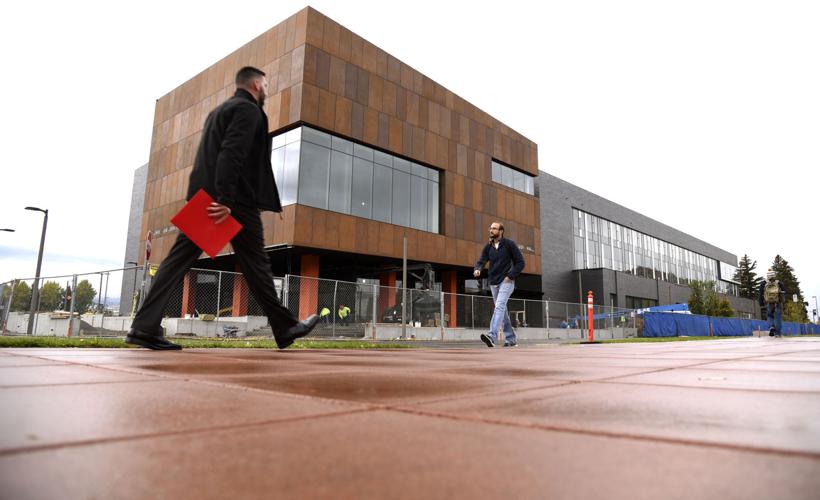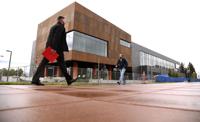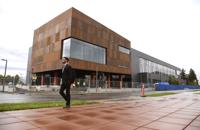When it opens in December, Montana State University’s newest building will get much of its energy from the sun and will use the surrounding earth to assist with its heating and cooling needs, significantly reducing operating costs.
That’s the simple explanation of cutting-edge building technology that helped Norm Asbjornson Hall become one of only 10 buildings in Montana certified as LEED Platinum, the U.S. Green Building Council’s highest certification.
“We’re very proud to provide a building this efficient for the state and for our university system,” said Brett Gunnink, dean of MSU’s Norm Asbjornson College of Engineering, which will occupy the building along with MSU’s Honors College.
Dan Stevenson, MSU’s associate vice president for university services, said Norm Asbjornson Hall will use roughly half the energy per square foot as many other buildings on campus, despite machine shops, laboratory vent hoods and other equipment with significant energy requirements contained within the building.
“This building is about pushing the envelope of energy-efficient design and integrating that into our students’ learning experience,” Stevenson said. Built-in data-gathering systems will allow students to analyze the building’s energy performance, and parts of the heating and cooling system are prominently displayed and accessible for teaching.
The public will be able to tour Norm Asbjornson Hall during its grand opening on Friday, Dec. 14, with a ribbon-cutting kickoff at 10 a.m. Norm Asbjornson Hall is located on the southwest corner of Seventh Avenue and Grant Street.
As a result of design features that contributed to the LEED designation, the building’s classrooms, workshops, research labs and offices will also be ventilated and full of natural daylight, creating an ideal working and learning environment, Stevenson said.
The building marks a major step forward for MSU’s energy-efficient buildings, Stevenson noted. For instance, the building’s south face features multiple solar walls, which consist of a heat-absorbing, perforated surface. Air drawn through the solar walls is warmed and then used for ventilation.
The technology, first installed at MSU on a smaller scale on Jabs Hall in 2016, “has proven to be even more effective than we thought it would be,” Stevenson said. Solar walls cost only slightly more than a conventional wall surface and quickly pay for themselves with energy savings, he said.
Norm Asbjornson Hall also features a closed-loop geothermal system that circulates water through pipes to a depth of 500 feet below the ground’s surface to either help cool or warm the building.
Lights that automatically adjust according to daylight levels and special windows that change tint to reduce glare and unwanted heat from the sun are among the other features that helped tally 82 points on LEED’s 109-point scale. Other achievements that contributed to the LEED Platinum certification included:
- Low-flow indoor fixtures resulting in water use reduction of 41 percent
- Diversion of 96 percent of construction waste from landfill
- Ease in public transportation access
- Stormwater management system that includes vegetated retention ponds and an underground storage facility, reducing use of the city’s stormwater system and resulting in increased water quality
- Selection of materials containing recycled content and sourced regionally; wood was sustainably harvested
- Selection of paints, coatings, adhesives, sealants and floor coverings with low or no emission of volatile chemicals



